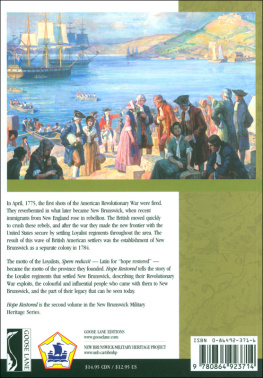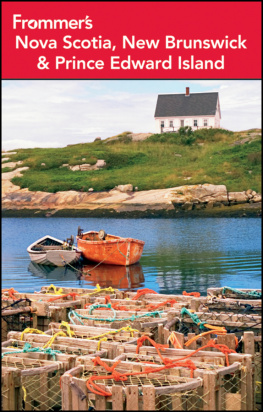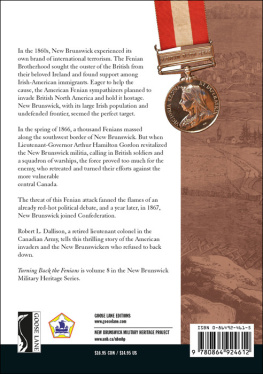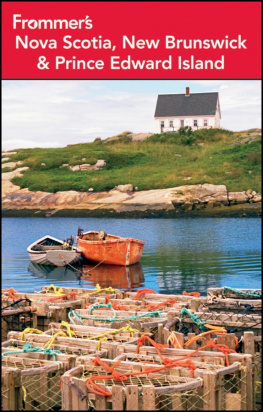Hope Restored
The American Revolution and
the Founding of New Brunswick
Hope Restored
The AMERICAN REVOLUTION
and the founding of
NEW BRUNSWICK
ROBERT L. DALLISON
The New Brunswick Military Heritage Series
Volume 2

Copyright Robert L. Dallison, 2003.
All rights reserved. No part of this work may be reproduced or used in any form or by any means, electronic or mechanical, including photocopying, recording, or any retrieval system, without the prior written permission of the publisher or a licence from the Canadian Copyright Licensing Agency (Access Copyright). To contact Access Copyright, visit www.accesscopyright.ca or call 1-800-893-5777.
Edited by Lisa Alward.
Cover and interior design by Paul Vienneau and Julie Scriver.
NBMHP cartographer: Mike Bechthold.
Printed in Canada by Transcontinental.
10 9 8 7 6 5 4 3 2 1
Photos and other illustrative material on page 14 appear courtesy of the National Archives of Canada (NAC); on pages 18, 24, 36, 42, 52, 60, 66, 78, and 88, courtesy of the New Brunswick Museum (NBM); on pages 32, 40, 64, 80, 86, and 96, courtesy of Kings Landing Historical Settlement (KLHS); on page 84, courtesy of Heritage Resources, Saint John (HRSJ); on page 76, courtesy of the Provincial Archives of New Brunswick (PANB). Cover illustrations: Detail from Illustrations of Uniforms of Loyalist Regiments of the American War of Independance, NBM; detail from A New and accurate map of the Islands of Newfoundland, Cape Briton, St. John and Anticosta , 1747, by Emanuel Bowen, courtesy of the Bibliothque nationale du Qubec; detail from Loyalists Landing at Saint John by Adam Sheriff Scott, courtesy of the Cultural Affairs Office, City of Saint John.
NATIONAL LIBRARY OF CANADA CATALOGUING IN PUBLICATION
Dallison, Robert L., 1935
Hope restored: the American Revolution and the founding of New Brunswick/
Robert L. Dallison.
(New Brunswick militar y heritage series; 2)
Co-published by the New Brunswick Military Heritage Project.
Includes bibliographical references and index.
ISBN 0-86492-371-6
1. New Brunswick History, Military. 2. Nova Scotia History 1775-1783.
3. British New Brunswick History 18th century. I. New Brunswick Military
Heritage Project II. Title. III. Series.
FC2471.S34 2003 971.5101 C2003-904747-4
Published with the financial support of the Canada Council for the Arts, the Government of Canada through the Book Publishing Industry Development Program, the New Brunswick Culture and Sports Secretariat, the Canadian War Museum, and the Military and Strategic Studies Program at the University of New Brunswick.
GOOSE LANE EDITIONS
Suite 330, 500 Beaverbrook Court
Fredericton, New Brunswick
CANADA E3B 5X4
www.gooselane.com
NEW BRUNSWICK MILITARY HERITAGE PROJECT
Military and Strategic Studies Program
Department of History, University of New Brunswick
PO Box 4400
Fredericton NB E3C 1M4
www.unb.ca/nbmhp
To the late Dr. George F.G. Stanley, historian and teacher, who instilled in me a great love of Canadian history.
TABLE OF CONTENTS
CHAPTER ONE
The Turmoil Spreads North
The American Revolutionary War Along the Bay of Fundy
CHAPTER TWO
In the Service of King George III
The British Provincial Corps and Their Arrival in New Brunswick
CHAPTER THREE
The Loyalist Regiments
The Provincial Corps Disbanded in New Brunswick
CHAPTER FOUR
The Legacy of the Military Loyalists
The Provincials Take Root in New Brunswick
CHAPTER FIVE
People and Places
Selected New Brunswick Military Loyalist and Revolutionary War Sites
CHAPTER ONE
The Turmoil Spreads North
The American Revolutionary War Along
the Bay of Fundy
The celebrated first shot of the American Revolutionary War was fired at Lexington, Massachusetts, on April 19, 1775. Almost immediately, reverberations were felt in what is now the Province of New Brunswick. The British garrisons at Fort Frederick, protecting the St. John River, and at Fort Cumberland, at the head of the Bay of Fundy, had been sent as reinforcements to Boston, to counter the growing unrest in British North America. When Captain Stephen Smith, a privateer from Machias in Massachusetts (now Maine), arrived at the mouth of the St. John River, he seized Fort Frederick without opposition, burned it to the ground, made prisoners of the four unfortunate remaining British soldiers, and captured the brig Loyal Briton. This vessel was loaded with provisions from the St. John River Valley. The poultry, cattle, and other much needed supplies

North view of Fort Frederick, built by Colonel Robert Monckton in 1758. Sketch by Captain Lieutenant Thomas Davies (detail). NATIONAL GALLERY OF CANADA
had been destined for the besieged British Army in Boston. Although the Bay of Fundy was on the periphery of British North America, the momentous events occurring in the Thirteen Colonies dragged the region into the American Revolutionary War; with the aftermath of the conflict defining New Brunswick and its future.
Following the Seven Years War, settlement along the Bay of Fundy was characterized by slow growth and a lagging economy. The region was very much a frontier; the settlers were still struggling to establish themselves, when this new war loomed on the horizon. With their exposed location and a population largely from New England, the Bay of Fundy settlements quickly attracted rebellious New Englanders endeavouring to enlist both the Native and non-Native populations in the rebel cause. The area suffered two invasions and numerous raids during the war, with the outcome uncertain.
At the outbreak of the American Revolutionary War, the boundaries of the British colony called Nova Scotia were ill defined. Nova Scotia certainly consisted of what are now the provinces of Nova Scotia, Prince Edward Island, and New Brunswick, but its northern border with Quebec and its western border with Massachusetts (now Eastern Maine), were subject to considerable debate. The defence of this extensive area fell to the British Royal Navy, but in 1775 the navy had a mere thirty ships in all the waters of North America. Only a few lightly armed sloops were available to protect Nova Scotia. However, the uncontested raid on Fort Frederick had made it painfully obvious that the colonys shipping and its coast were easy prey for rebel raiders.
The British Army, besieged in Boston, was secure from direct assault, but it was effectively cut off from the surrounding countryside by George Washingtons army. Soon it was in desperate need of all manner of supplies. Transporting goods from Britain was expensive and slow, but Nova Scotia offered an attractive alternative. Enterprising Nova Scotians quickly discerned that they could make handsome profits supplying the besieged British Army. Within two weeks, to the chagrin of the rebels sitting impatiently in their siege lines, over twenty vessels were bound for Boston, loaded with provisions. Rebel privateers reacted quickly, capturing a transport outside Boston Harbour fully laden with livestock from the Bay of Fundy. The Royal Navy responded by introducing a convoy system. Once ships were found for escort duty, the traffic from Nova Scotia continued unabated until Boston was evacuated.
Next page











